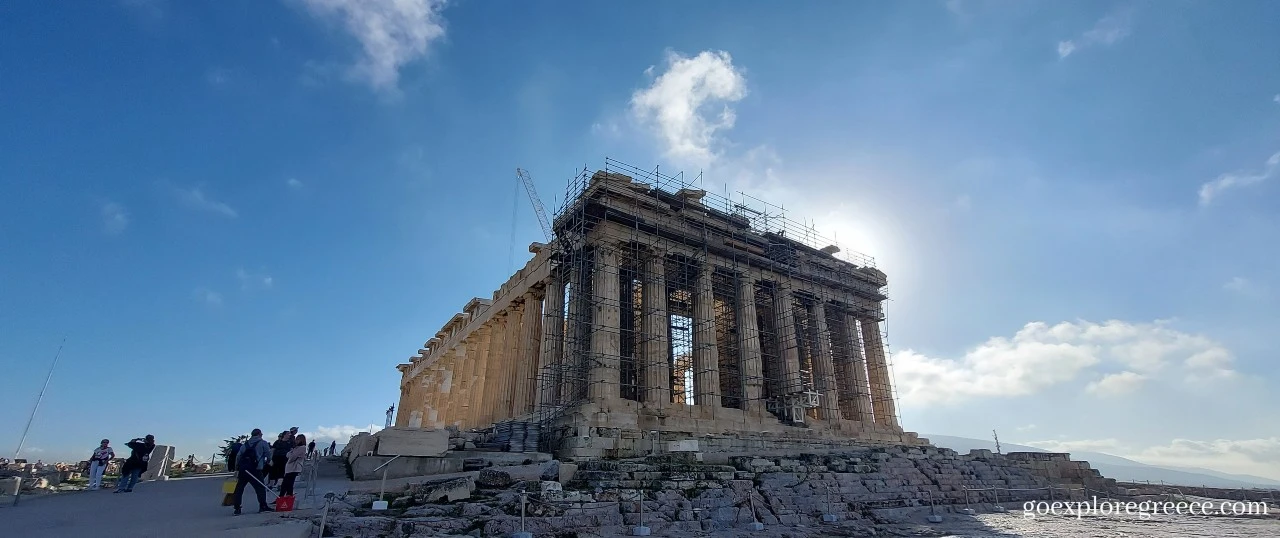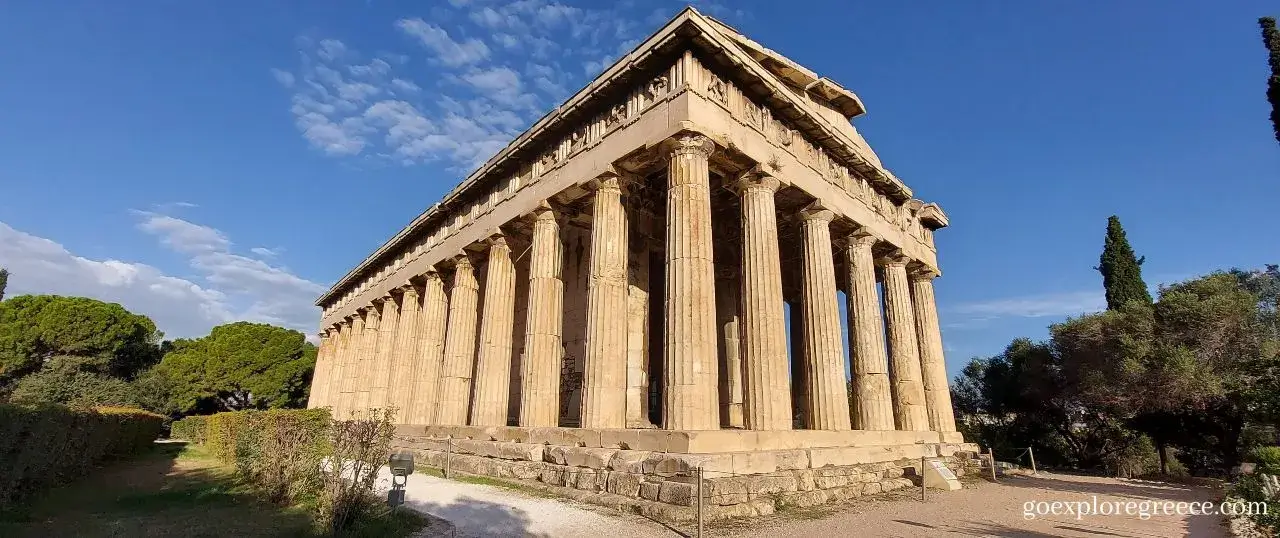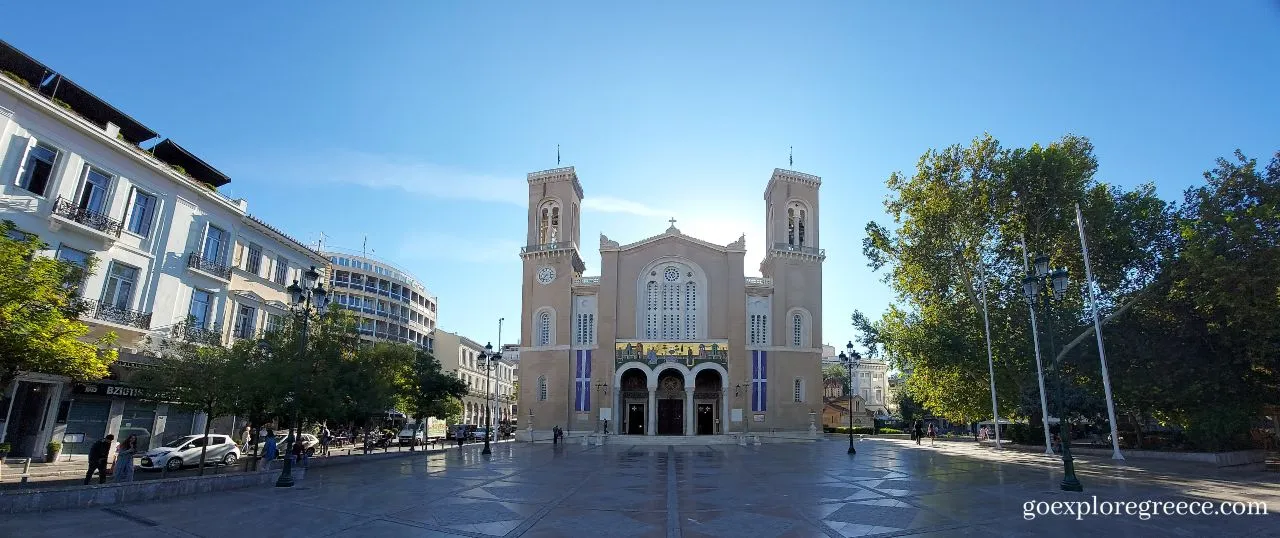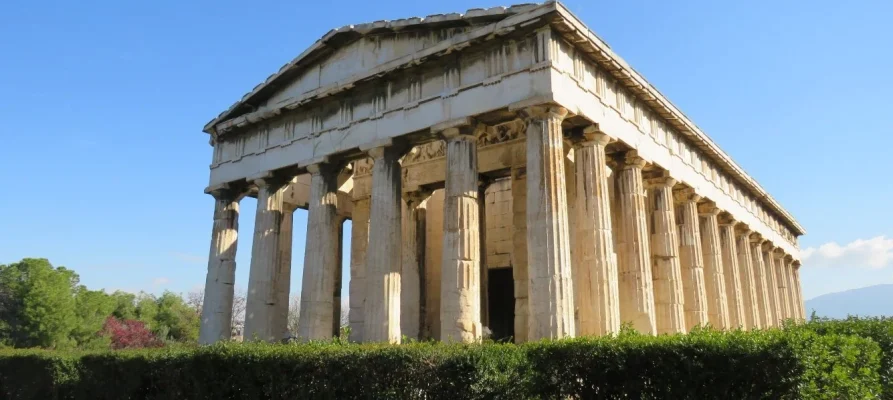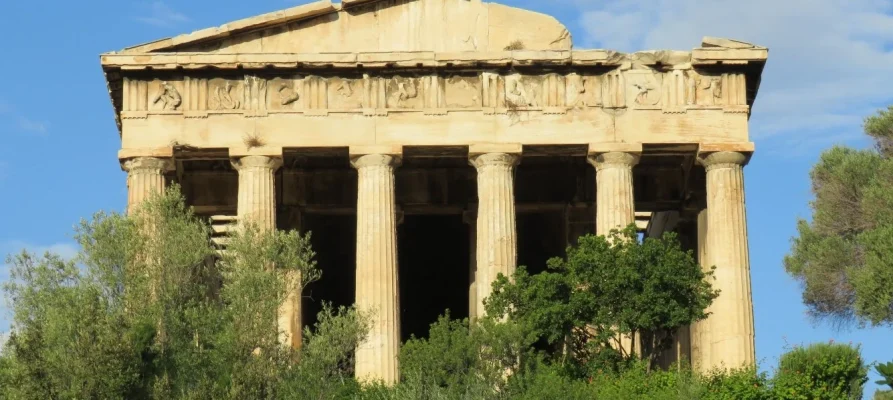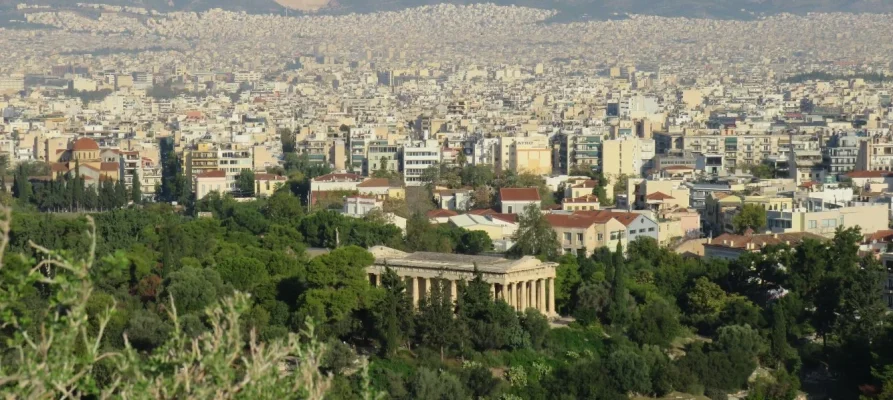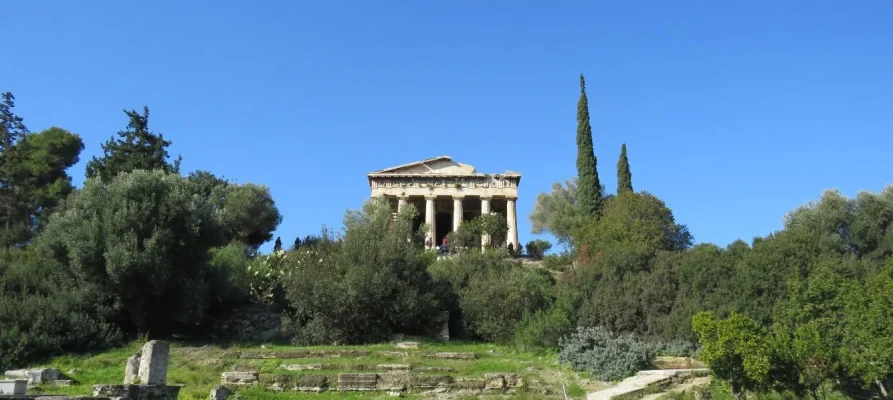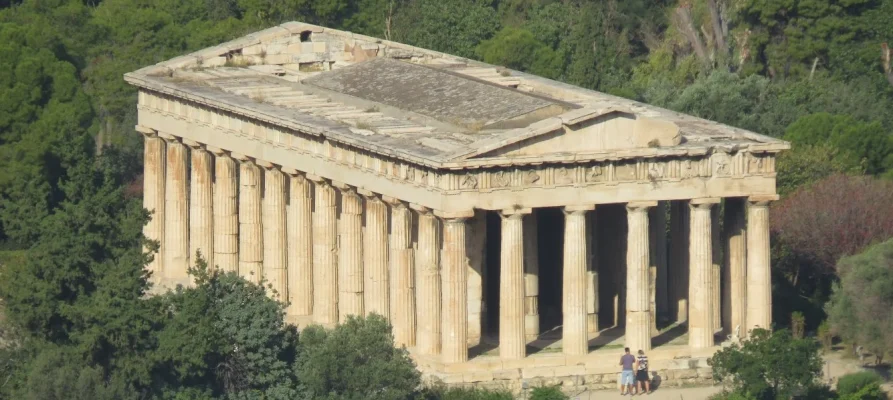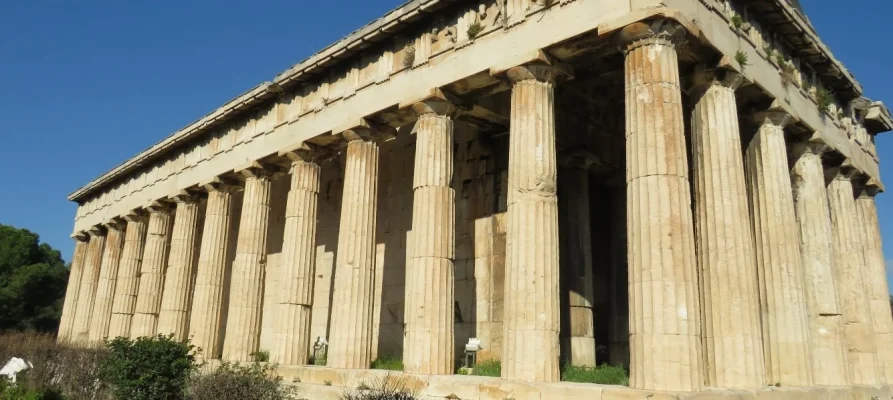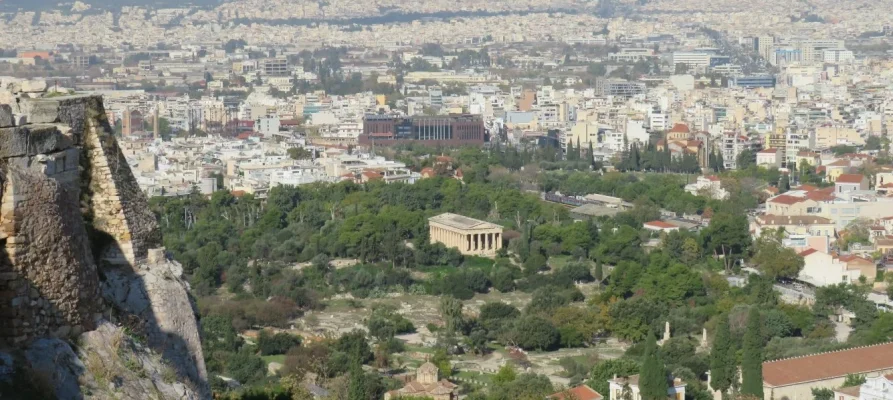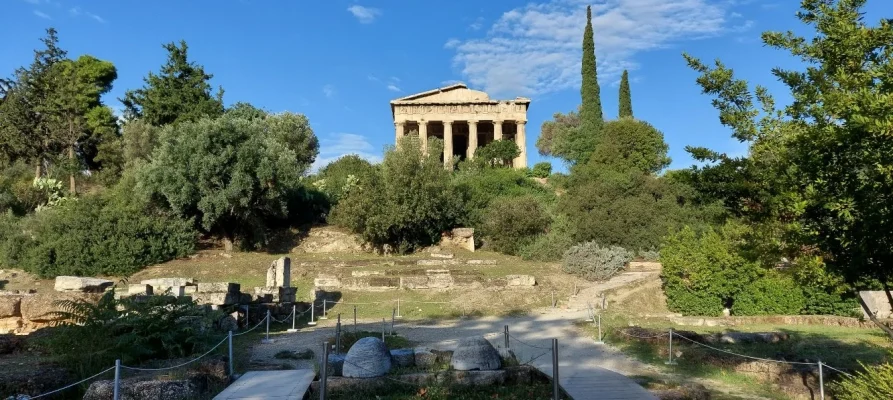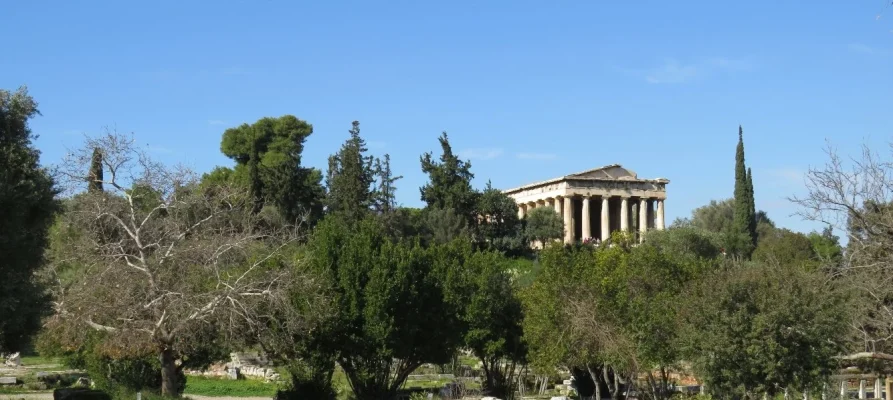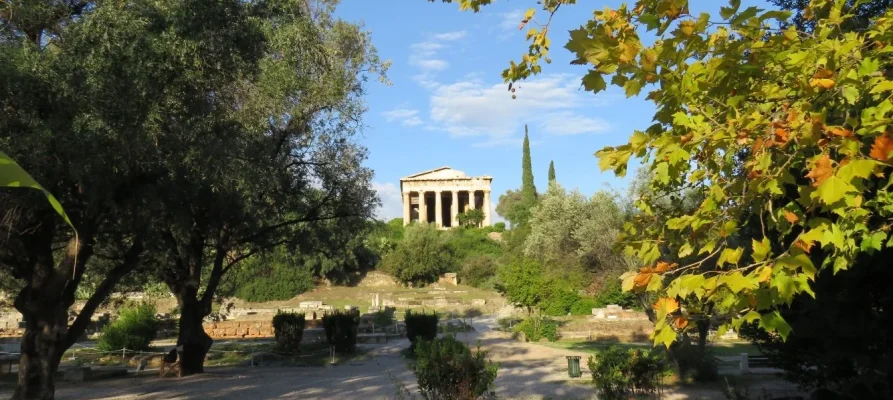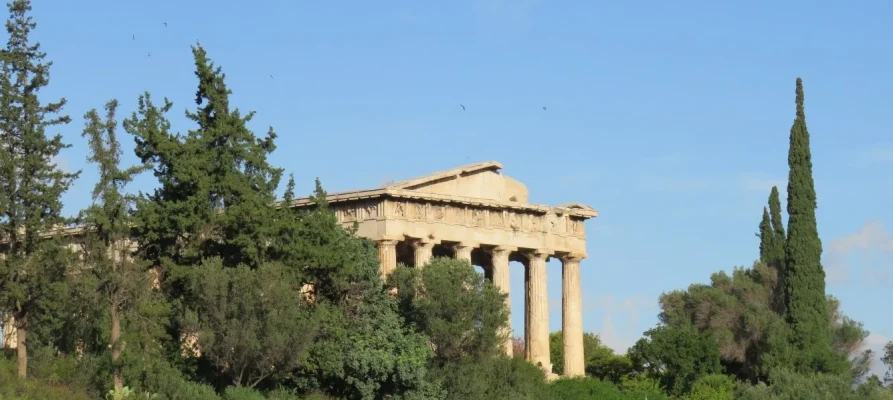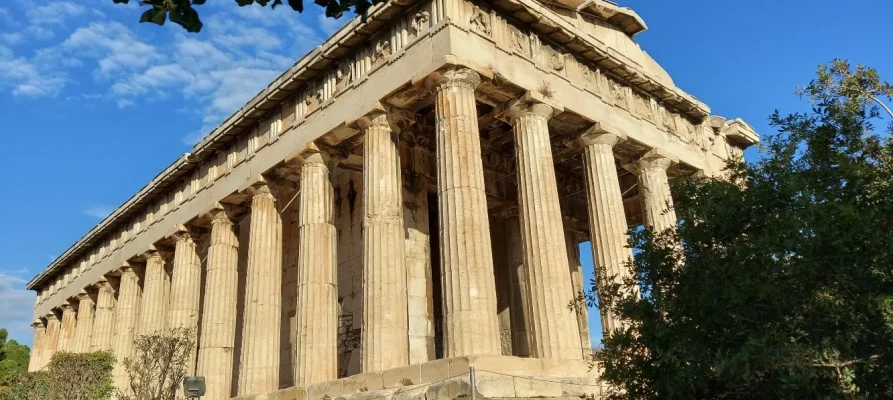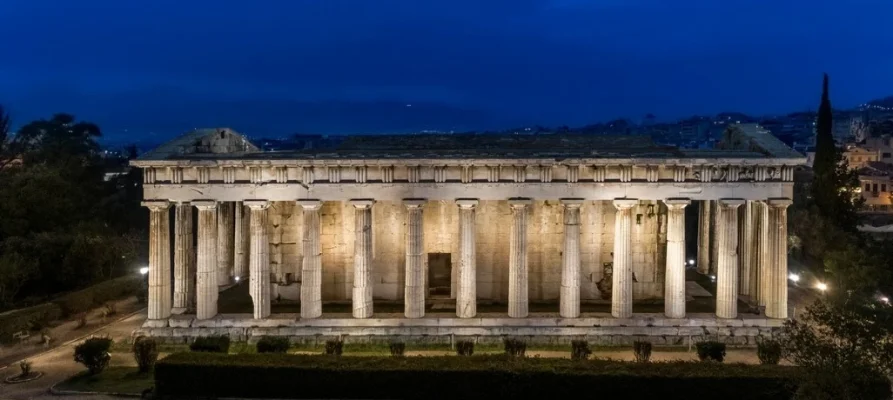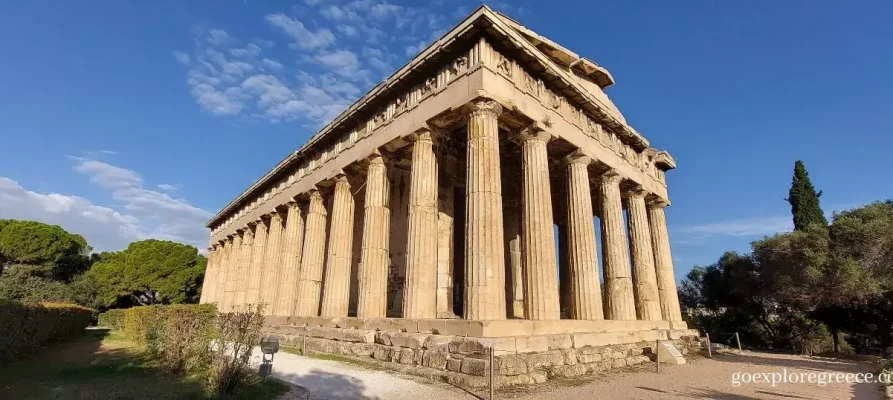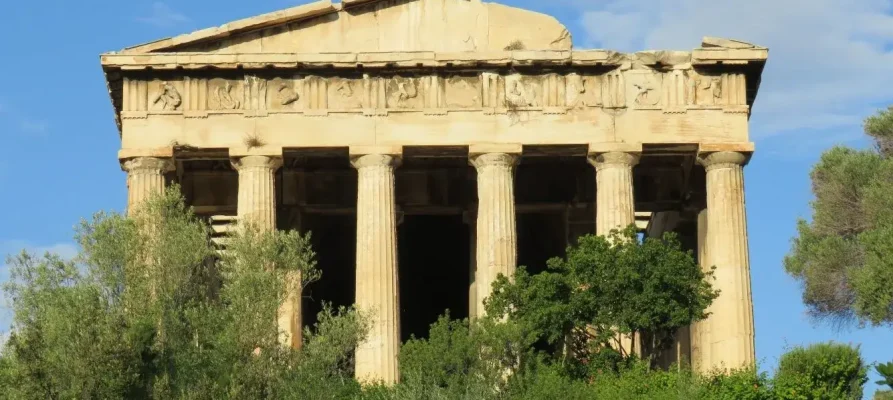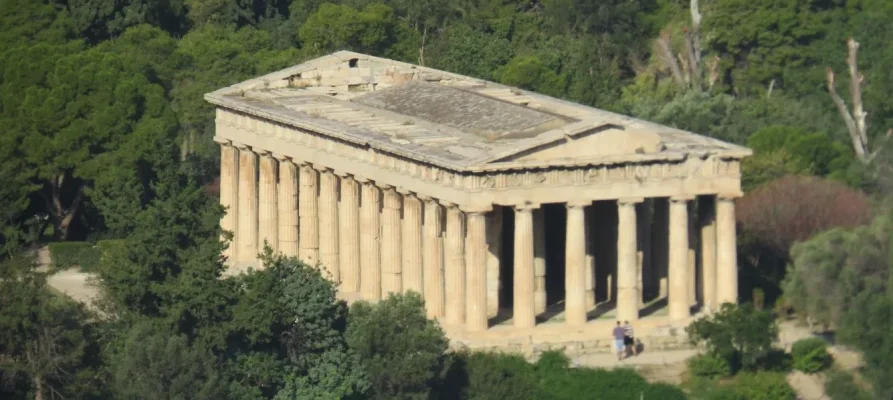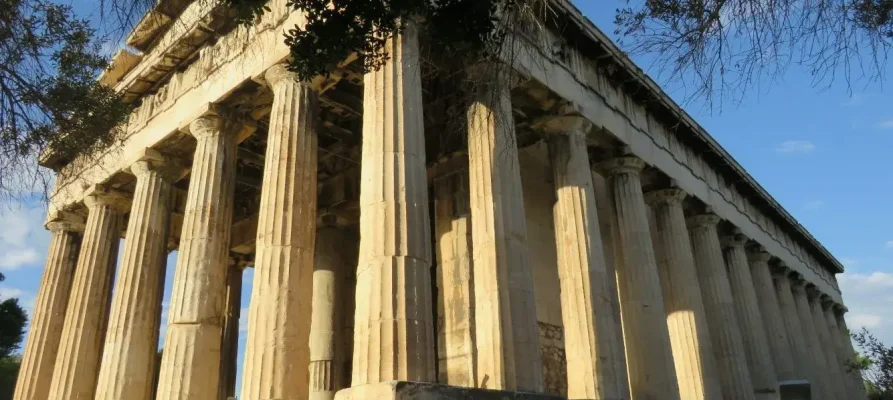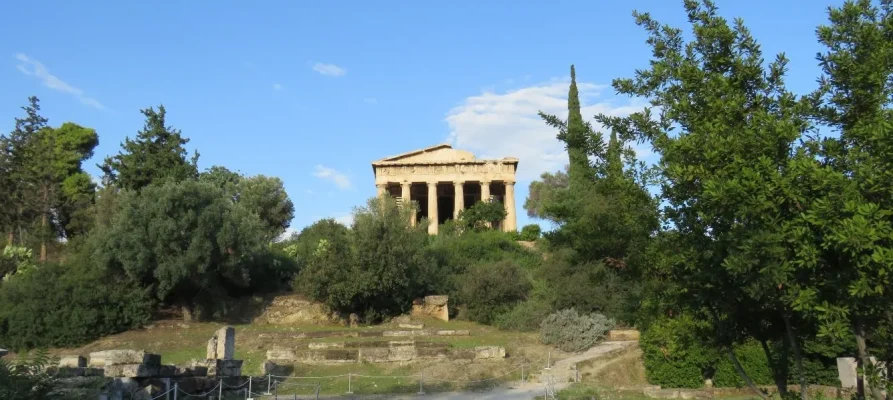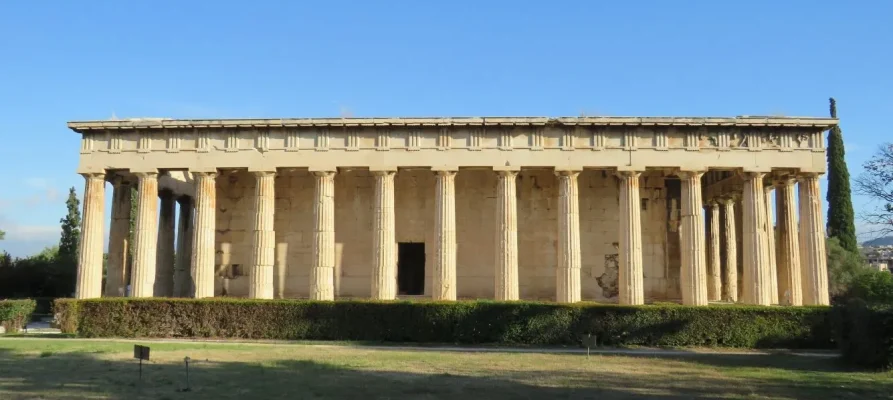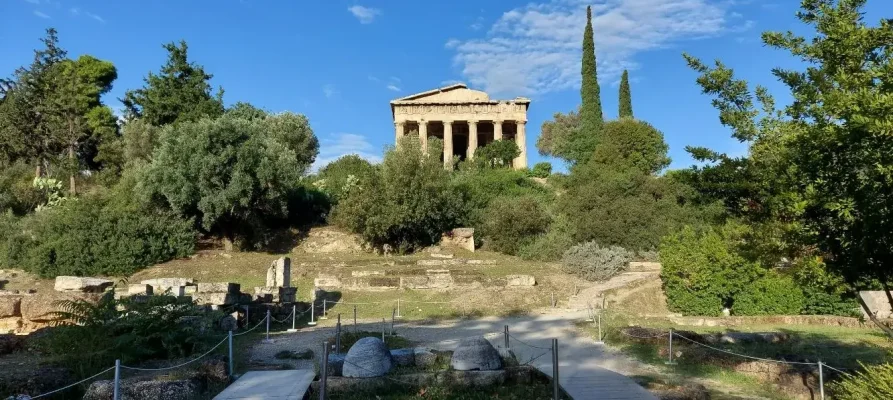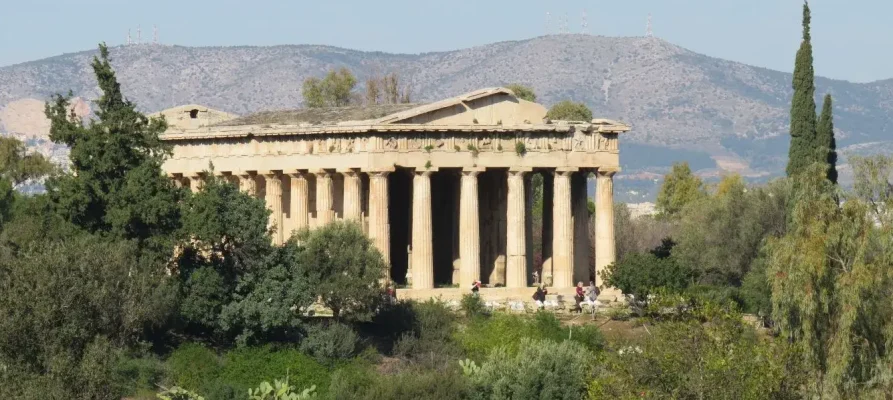Temple of Hephaestus
Temple of Hephaestus
The Temple of Hephaestus is one of the most magnificent attractions in Athens and should definitely be on your list of things to do while visiting the city. Nestled in the heart of the Ancient Agora of Athens, this stunning temple is also known as the Hephaisteion or the Theseion. As you wander through the ancient grounds, you’ll be transported back in time to an era of gods and heroes.
Constructed in the 5th century BC, the Temple of Hephaestus was built to honour Hephaestus, the Greek god of fire, metalworking, and craftsmanship, and Athena Ergane, the goddess of crafts and weaving. The temple is a prime example of classical architecture, and its well-preserved state will leave you in awe. So, if you’re looking for activities that showcase Athens’s rich history and culture, visiting the Temple of Hephaestus is a must.
Now, there are plenty of things to do in Athens and that you might not have time for everything. However, I can assure you that the Temple of Hephaestus is one of the best things to see in Athens and an experience you won’t want to miss. The temple’s location within the Ancient Agora of Athens allows you to explore this magnificent structure and the surrounding archaeological site, which is brimming with fascinating ruins, buildings, and artefacts.
As you approach the Temple of Hephaestus, its impressive Doric columns will captivate you. The temple stands proudly on top of Agoraios Kolonos Hill, overlooking the Ancient Agora and providing sweeping views of Athens. The temple’s excellent state of preservation is due to its conversion into a Christian church in the 7th century AD, which helped protect it from the ravages of time.
As you explore the temple, you’ll be amazed by the intricate details of its friezes and sculptures, all testament to the extraordinary craftsmanship of ancient Greek artisans. The frieze on the eastern side of the temple depicts the labours of Heracles. In contrast, the western side illustrates the story of Theseus, the mythical founder of Athens. On the temple’s southern and northern sides, are friezes depicting the Centauromachy and the Amazonomachy, respectively. These captivating scenes will give you a sense of the rich mythology that inspired the creation of this majestic temple.
The Temple of Hephaestus is not only an architectural marvel but also a valuable source of information about ancient Greek religion, society, and culture. By visiting this splendid monument, you’ll gain a deeper appreciation for the incredible achievements of the ancient Greeks and their enduring influence on the world. Furthermore, the Temple of Hephaestus is one of the best museums in Athens because it showcases the art and skill of ancient Greek sculptors whose work has shaped Western art history.
As you explore the Temple of Hephaestus and the surrounding Ancient Agora, you’ll be following in the footsteps of Socrates, Plato, and other great thinkers who once walked these very grounds. This connection to the past is one of the many reasons why visiting the Temple of Hephaestus should be high on your list of things to do in Athens.
The Temple of Hephaestus is not only one of the best museums in Athens but also an unforgettable experience that will stay with you long after you’ve returned home. So, as you plan your itinerary and consider the many things to do in Athens, make sure to include a visit to the Temple of Hephaestus. As you explore this magnificent temple, you’ll be captivated by its architectural beauty, intricate sculptures, and the sense of history that permeates the air.
The Ancient Agora of Athens, which houses the Temple of Hephaestus, is easily accessible and located near other famous attractions like the Acropolis and the Parthenon. This means that while you’re visiting the temple, you’ll also have the opportunity to explore other significant sites in the area, making your time in Athens even more enriching.
As you roam the grounds of the Temple of Hephaestus, take a moment to appreciate the stunning views of Athens that stretch out before you. From this vantage point, you’ll gain a unique perspective on the city’s vibrant blend of ancient and modern elements. The Temple of Hephaestus is not only an incredible attraction in its own right but also a gateway to the broader history and culture of Athens.
In conclusion, the Temple of Hephaestus is not only one of the most well-preserved ancient Greek temples but also a fascinating and visually stunning attraction. As you make your way through Athens, don’t miss the opportunity to visit this iconic site and immerse yourself in the history, mythology, and artistry of ancient Greece. Among the many tourist attractions in Athens, the Temple of Hephaestus stands out as an essential destination that will enrich your understanding and appreciation of this remarkable city.
As the Temple of Hephaestus is in the Ancient Agora of Athens you will need tickets for this. Based on my personal experience, these top 3 Ancient Agora of Athens tickets are a must for any visitor. If you’re keen on exploring all the options, just click right here for the complete list of tickets to make the most of your visit.
Here’s my advice regarding access for those with disabilities and/or impairments at the Temple of Hephaestus:
While the Temple of Hephaestus and the Ancient Agora of Athens are historically significant sites, accessibility for people with disabilities and impairments can be challenging. The ancient grounds consist of uneven surfaces, steps, and cobblestones that may pose difficulties for wheelchair users or those with mobility impairments. Additionally, there might be few options for handrails or ramps to navigate these obstacles.
However, some parts of the Ancient Agora are accessible, and visitors can still enjoy the general atmosphere, take in the views, and learn about the site’s history through information panels and guides. It is always a good idea to contact the site management beforehand to inquire about any specific accessibility needs and to receive the most up-to-date information on available facilities.
Guided tours with knowledgeable tour guides can be beneficial for visitors with visual or hearing impairments, as they provide detailed descriptions of the site and its history.

